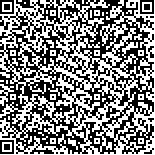| 摘要: |
| [摘要] 目的 探讨老年女性阻塞性睡眠呼吸暂停(OSA)患者血红蛋白(Hb)增多发生率及其相关影响因素。方法 收集2015年1月至2017年10月6家三甲医院收治的363例老年女性OSA患者的病历资料。根据Hb增多发生情况将患者分为单纯OSA组(329例)和OSA合并Hb增多组(34例)。比较两组患者的基线资料、多导睡眠监测数据以及相关合并症病史,采用多重线性回归分析探讨影响老年女性OSA患者Hb水平的因素。结果 363例老年女性OSA患者中,Hb增多34例(9.37%)。根据氧减指数(ODI),其中轻度OSA患者Hb增多9例(5.96%),中度OSA患者Hb增多7例(7.07%),重度OSA患者Hb增多18例(15.93%)。OSA合并Hb增多组ODI、血氧饱和度<90%的时间、舒张压、红细胞、白细胞、嗜酸性粒细胞水平高于单纯OSA组,最低血氧饱和度(LSpOr)、平均血氧饱和度(MSpOr)水平低于单纯OSA组,差异均有统计学意义(P<0.05)。多重线性回归分析结果显示,年龄、白细胞、血氧饱和度<90%的时间、舒张压为Hb水平的影响因素(P<0.05)。结论 老年女性OSA患者Hb增多发生率升高,且重度OSA患者的Hb增多发生率显著升高。更高的白细胞水平、舒张压、血氧饱和度<90%的时间以及更低的年龄是该人群促进Hb增多的危险因素。 |
| 关键词: 阻塞性睡眠呼吸暂停 老年女性 血红蛋白 氧减指数 |
| DOI:10.3969/j.issn.1674-3806.2024.01.05 |
| 分类号: |
| 基金项目:军队保健专项科研课题(编号:22BJZ52,23BJZ27);军队装备建设应用研究项目(编号:LB20211A010013) |
|
| Analysis on the incidence of increased hemoglobin in elderly women with obstructive sleep apnea and its influencing factors |
|
CAI Weimeng1,2, ZHAO Libo1,3, RUI Dong1,2, LI Kailiang4, GAO Yinghui5, CHEN Kaibing6, GAO Yan7, LIN Junling8, DING Qidi9, LIU Lin2
|
|
1.Graduate School, Chinese People′s Liberation Army General Hospital, Beijing 100853, China; 2.Department of Respiratory and Critical Care Medicine, the Second Medical Center of Chinese People′s Liberation Army General Hospital, National Clinical Research Center for Geriatric Diseases, Beijing 100853, China; 3.Department of Cardiology, the Second Medical Center of Chinese People′s Liberation Army General Hospital, National Clinical Research Center for Geriatric Diseases, Beijing 100853, China; 4.Health Department, Security Bureau of General Office of the CPC Central Committee, Beijing 100017, China; 5.Sleep Center, Peking University International Hospital, Beijing 102206, China; 6.Department of Sleep Medicine, Affiliated Hospital of Gansu University of Chinese Medicine, Lanzhou 730000, China; 7.Department of General Medicine, 960th Hospital of Chinese People′s Liberation Army, Jinan 250000, China; 8.Department of Respiratory and Critical Care Medicine, Beijing Chaoyang Hospital, Capital Medical University, Beijing 100000, China; 9.Department of Respiratory and Sleep Medicine, Peking University People′s Hospital, Beijing 100044, China
|
| Abstract: |
| [Abstract] Objective To explore the incidence of increased hemoglobin(Hb) in elderly women with obstructive sleep apnea(OSA) and its influencing factors. Methods The medical record data of 363 elderly female patients diagnosed with OSA in six tertiary hospitals from January 2015 to October 2017 were selected. The patients were divided into simple OSA group(329 cases) and OSA complicated with increased Hb group(34 cases) according to the occurrence of increased Hb. The baseline data, polysomnography monitoring data and history of relevant comorbidities were compared between the two groups. Multivariate linear regression analysis was used to analyze the influencing factors of Hb level in the elderly OSA women. Results A total of 363 elderly female OSA patients were enrolled, and 34 cases(9.37%) of the elderly female OSA patients had increased Hb. According to the oxygen desaturation index(ODI), there were 9 cases(5.96%) of mild OSA patients, 7 cases(7.07%) of moderate OSA patients, and 18 cases(15.93%) of severe OSA patients had increased Hb. The ODI, time with blood oxygen saturation less than 90%, diastolic blood pressure, red blood cell, white blood cell and eosinophil levels of the OSA complicated with increased Hb group were significantly higher than those in the simple OSA group, and the lowest oxygen saturation(LSpOr) and the mean oxygen saturation(MSpOr) in the OSA group were significantly lower than those in the simple OSA group, and the differences were significant(P<0.05). The results of multivariate linear regression analysis showed that age, white blood cell, time with blood oxygen saturation less than 90% and diastolic blood pressure were the influencing factors of Hb level(P<0.05). Conclusion The incidence rate of increased Hb in the elderly female patients with OSA is elevated, and the incidence rate of increased Hb is significantly high in the severity OSA patients. Higher levels of white blood cell, diastolic blood pressure, time with blood oxygen saturation less than 90% and younger age are the risk factors for increased Hb in this population. |
| Key words: Obstructive sleep apnea Elderly women Hemoglobin Oxygen desaturation index |

